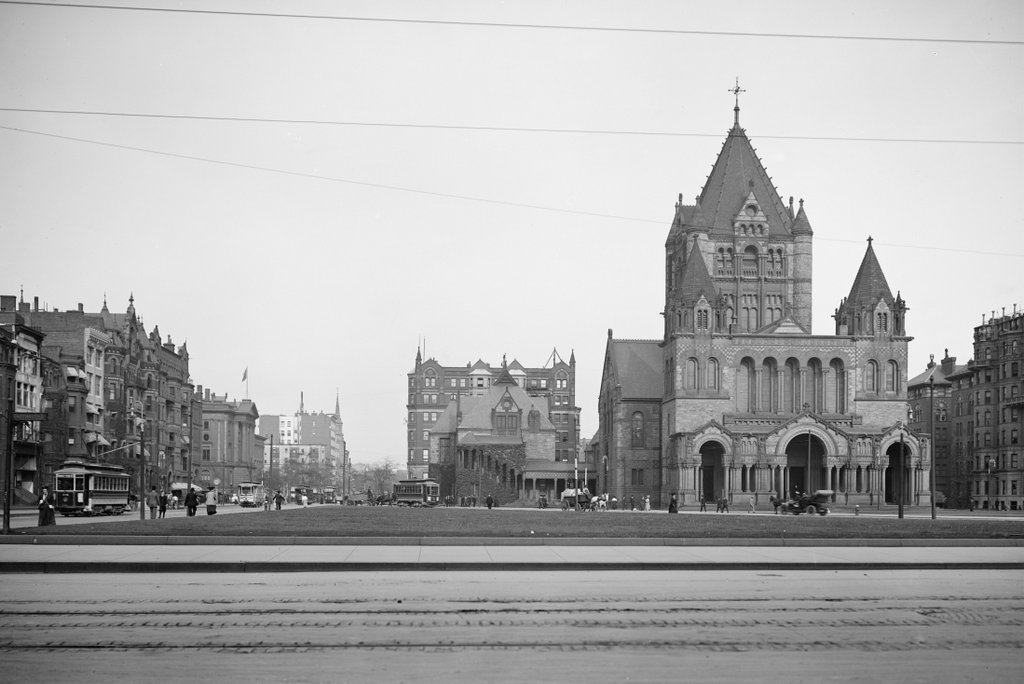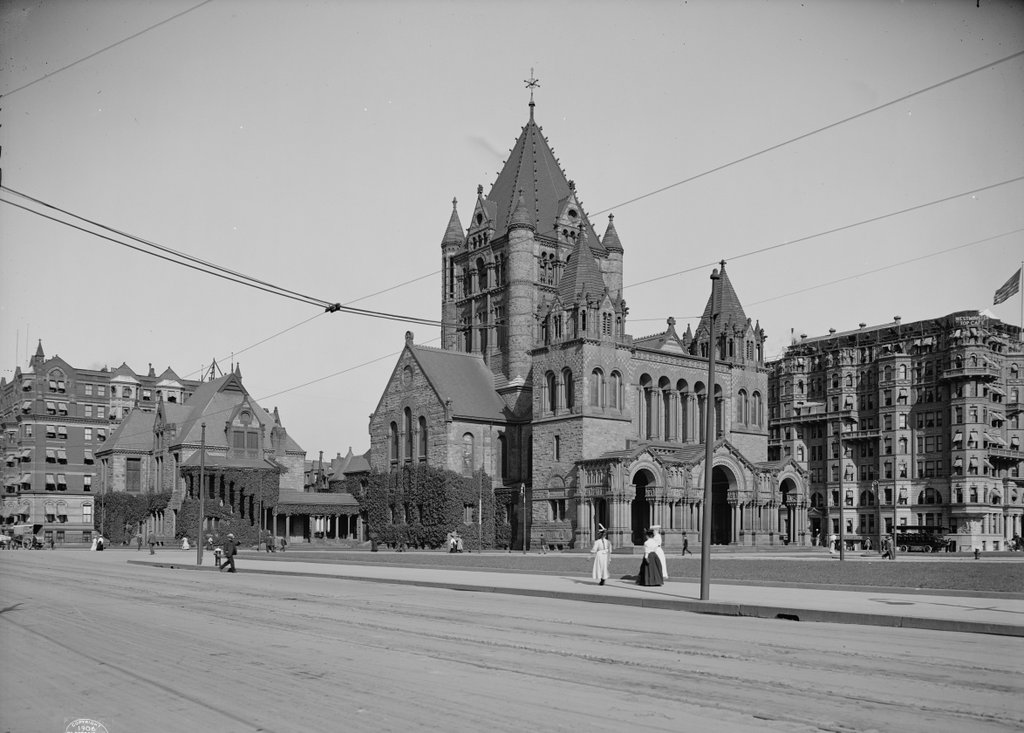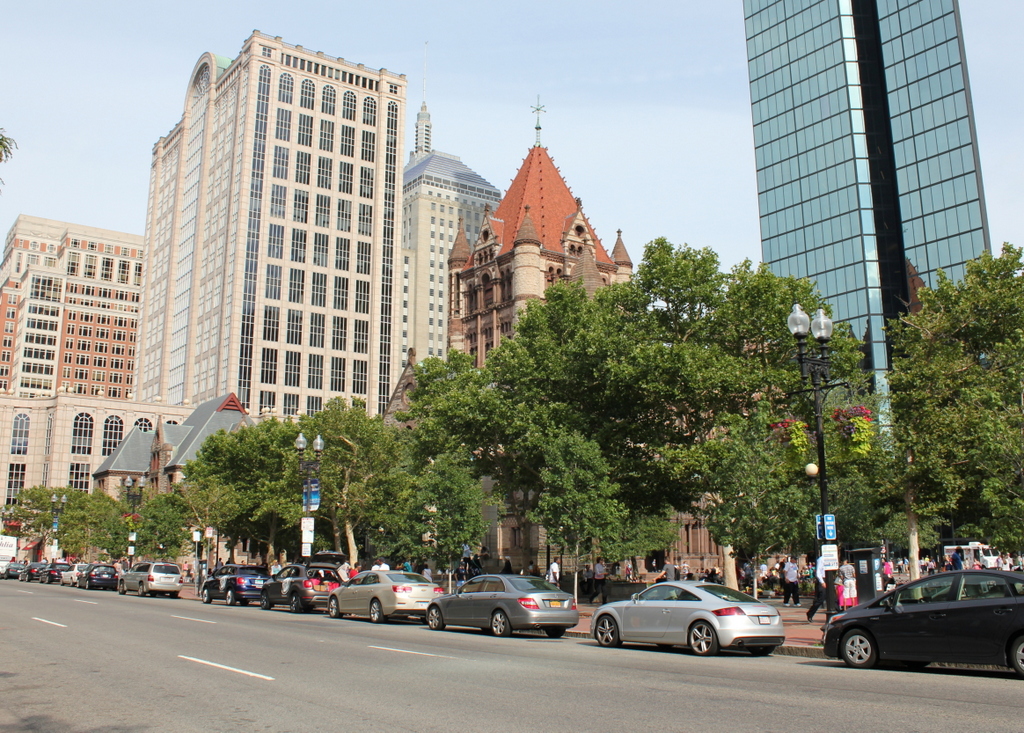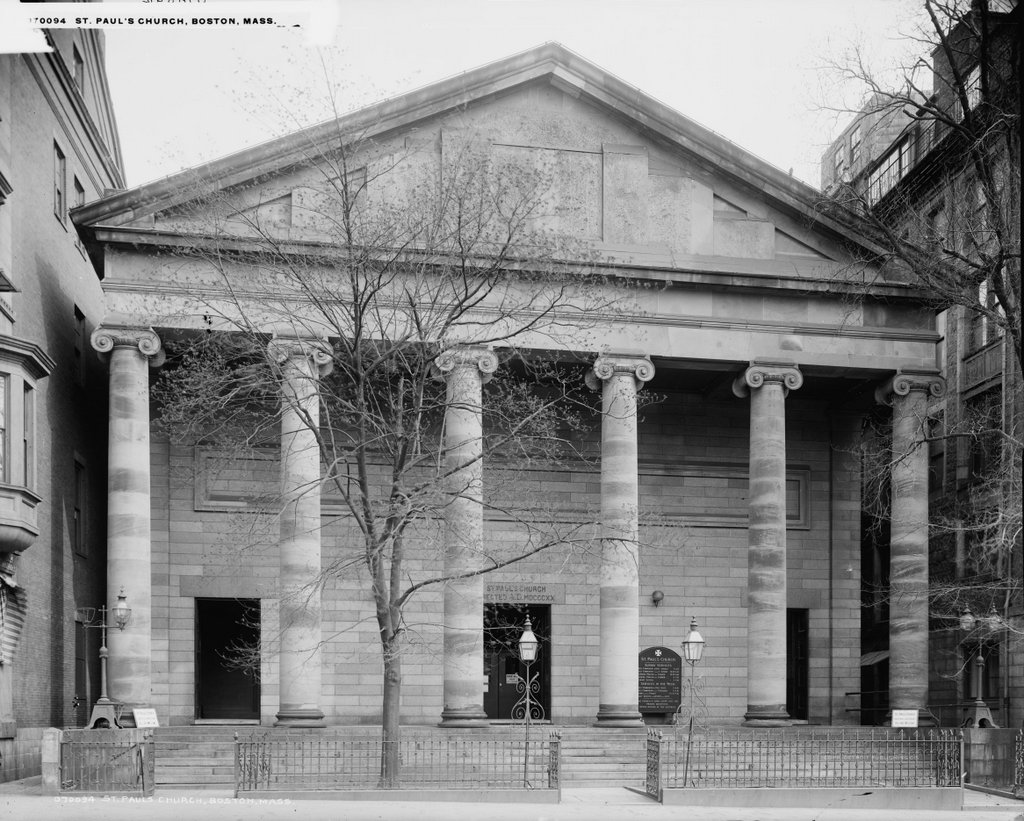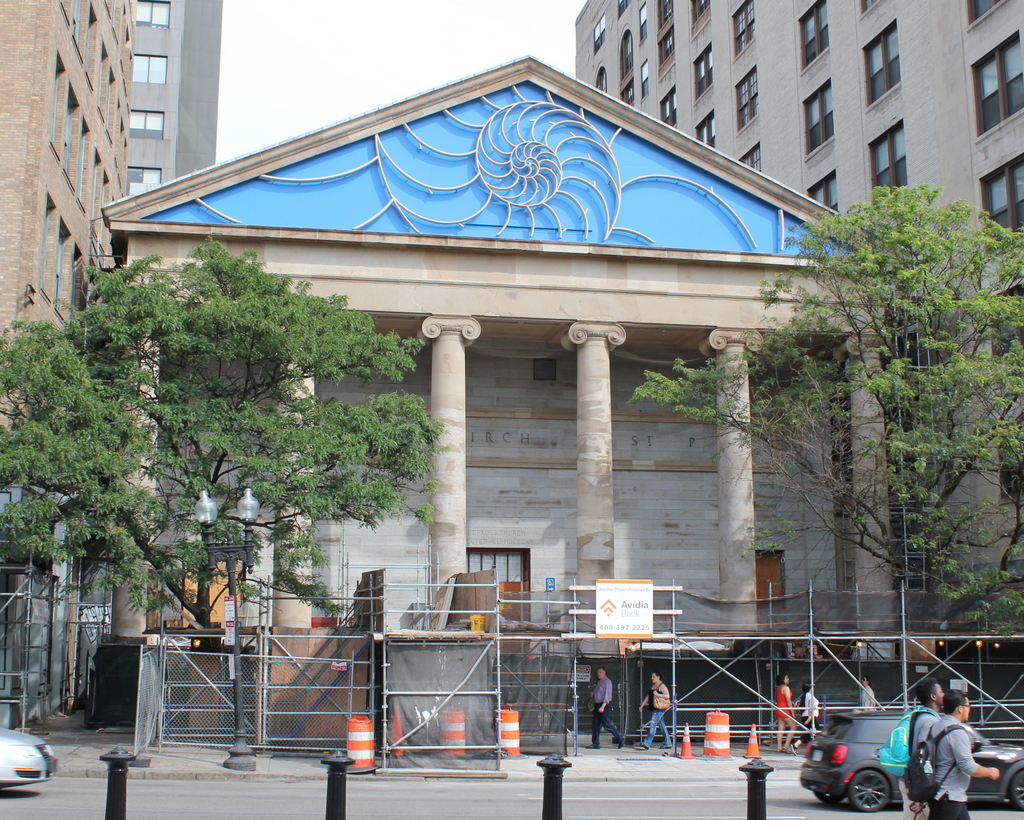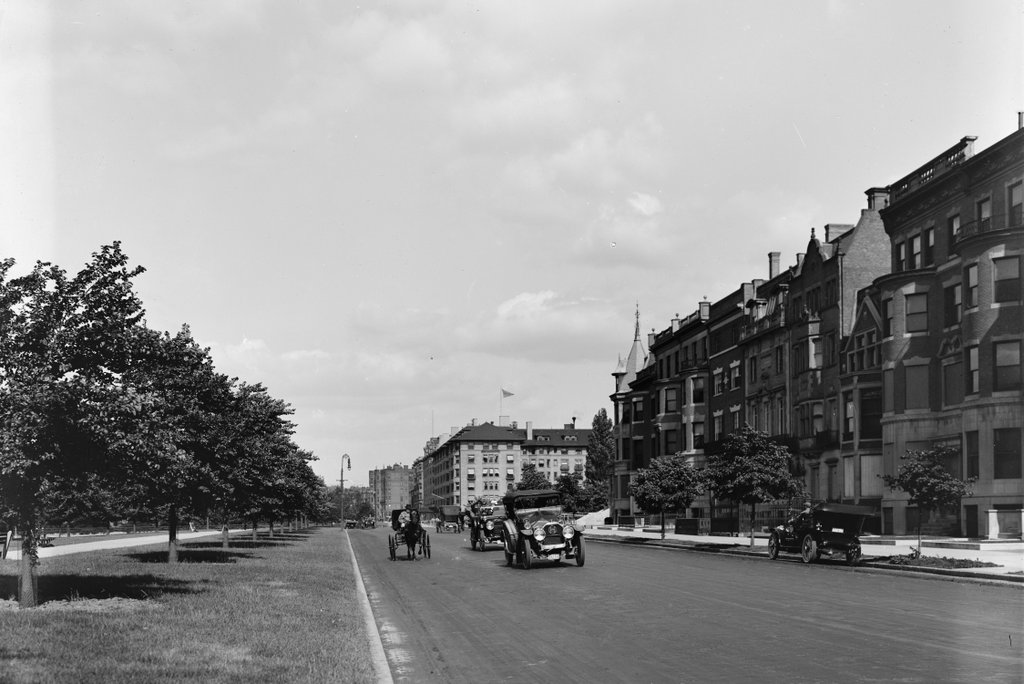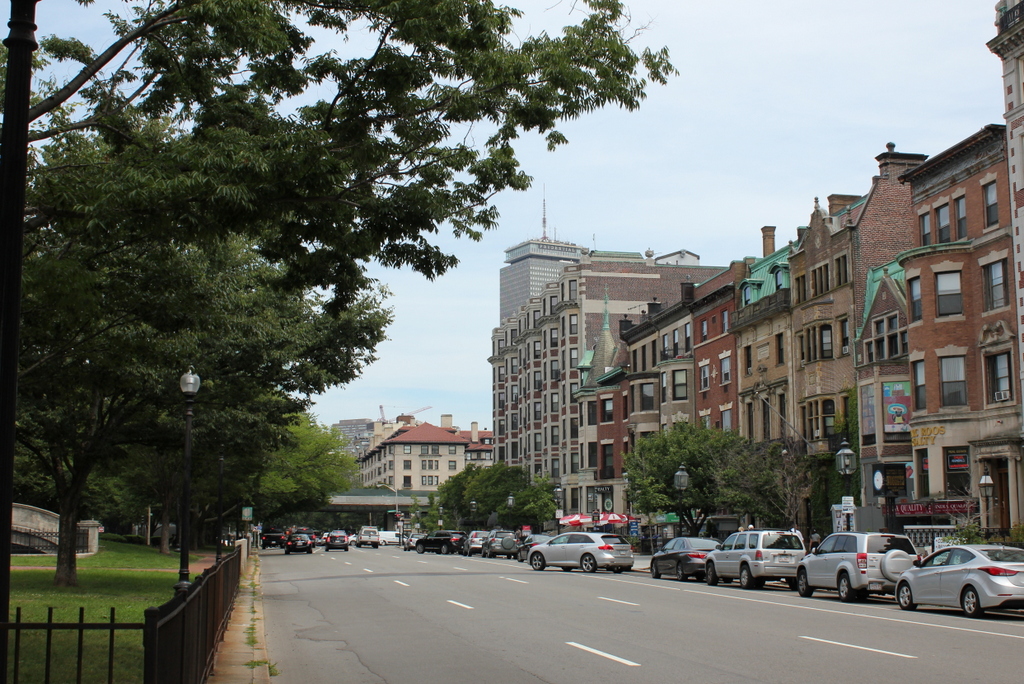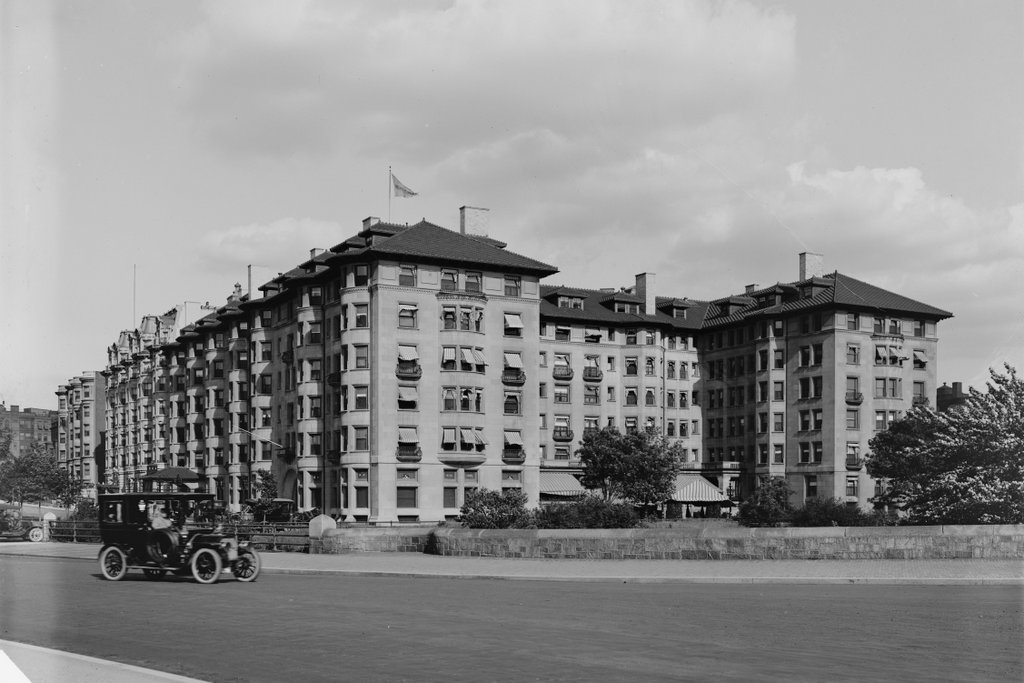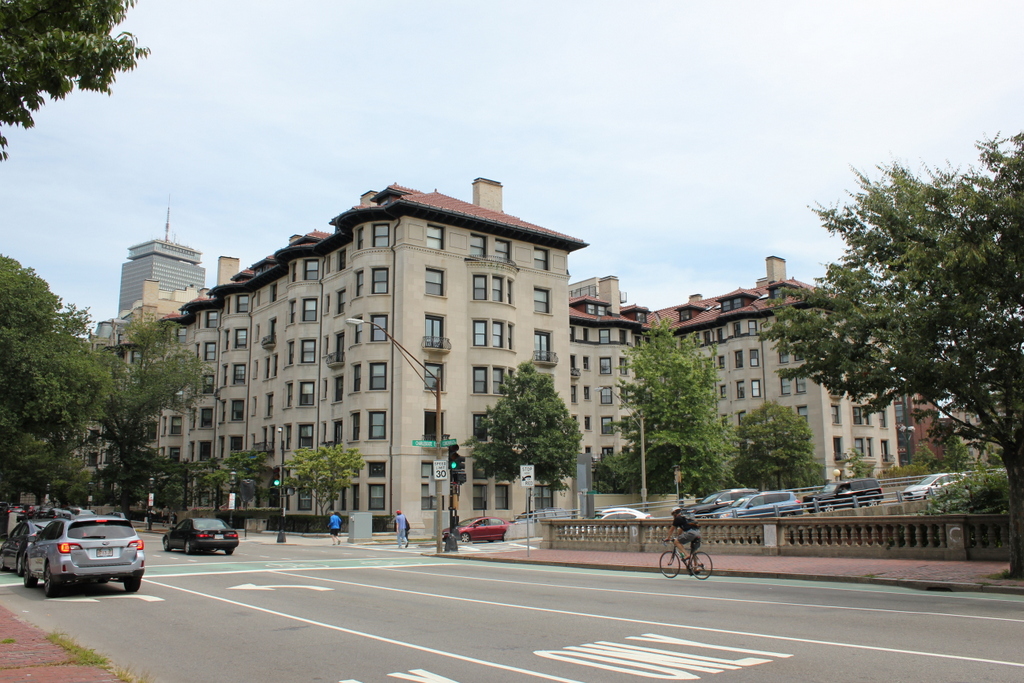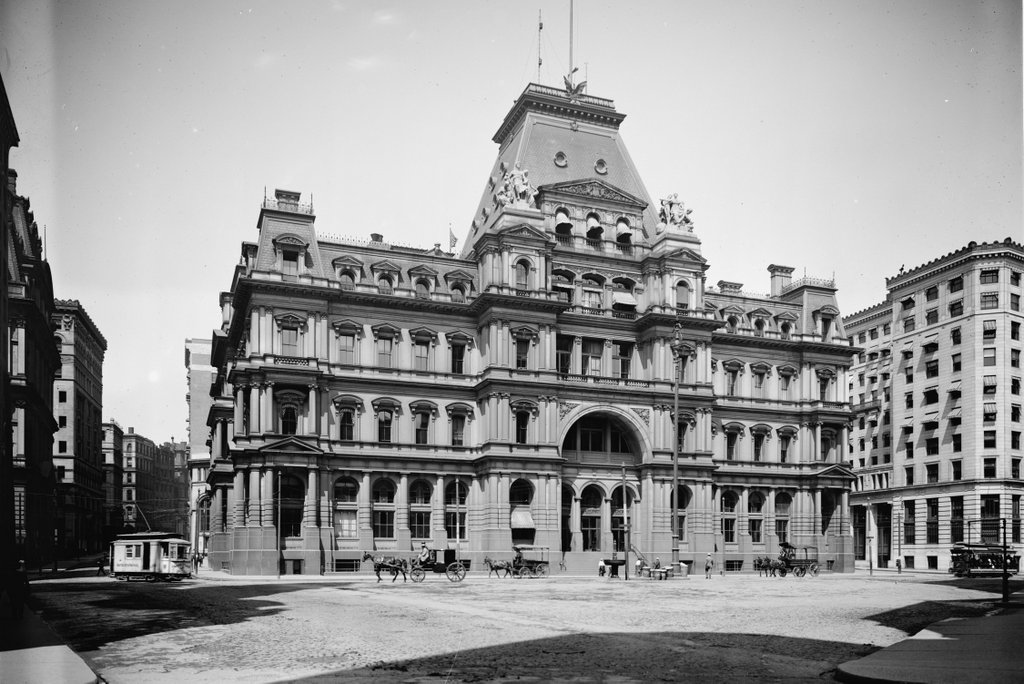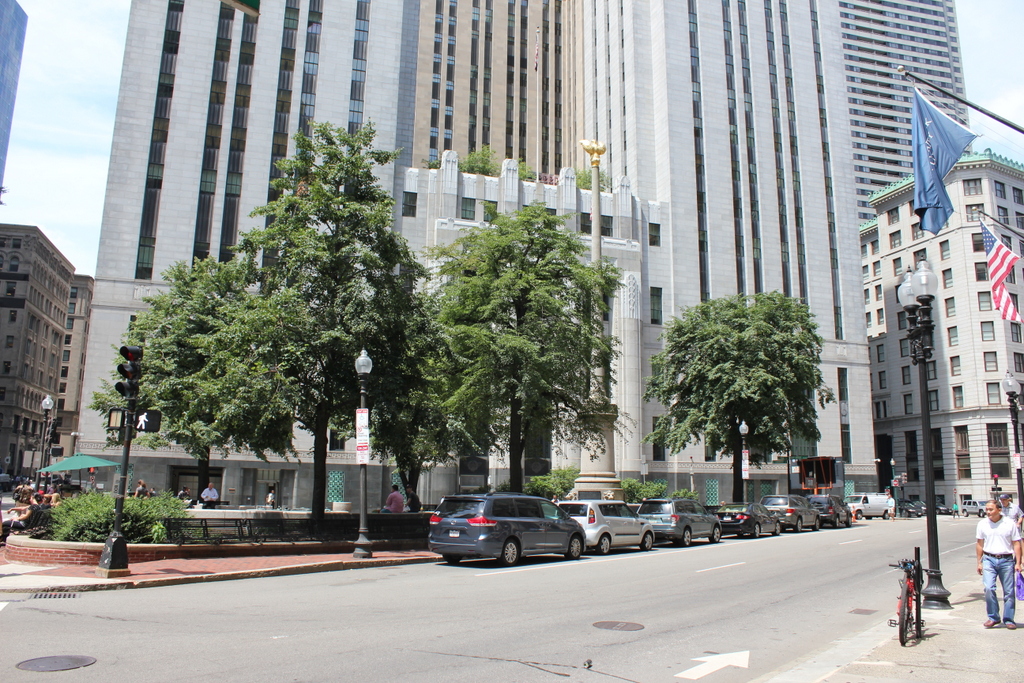Another view of Trinity Church at Copley Square, taken around 1909. Image courtesy of the Library of Congress, Detroit Publishing Company Collection.
The scene in 2015:
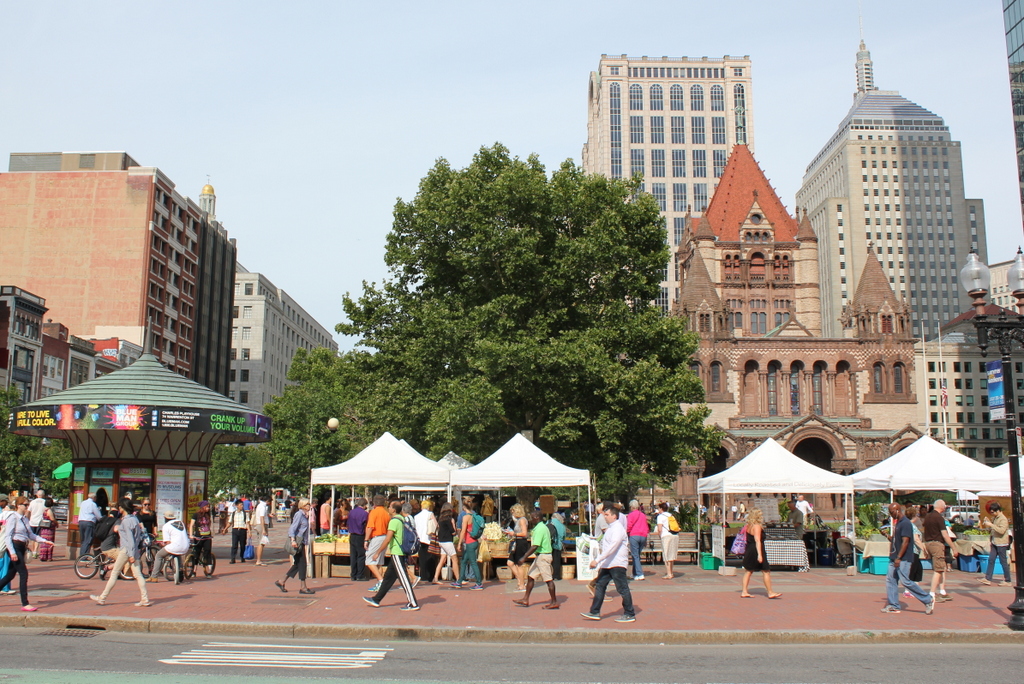
As mentioned in the previous post, Trinity Church has been a prominent landmark at Copley Square since its completion in 1877, and this scene shows the view from in front of the Boston Public Library facing east across Copley Square and down Boylston Street. It is essentially the opposite direction of the photos in this post, which were taken from the steps of Trinity Church. The church itself is still standing, but not much else from the first photo survives today. The original MIT campus, seen in the distance on the left side of Boylston Street, is gone; the school relocated across the river to Cambridge a few years after the first photo was taken. The other buildings behind the church to the left and right have also since been replaced with modern skyscrapers, so today the only other buildings that remain are the ones on the far left on Boylston Street, which were featured in this post.

